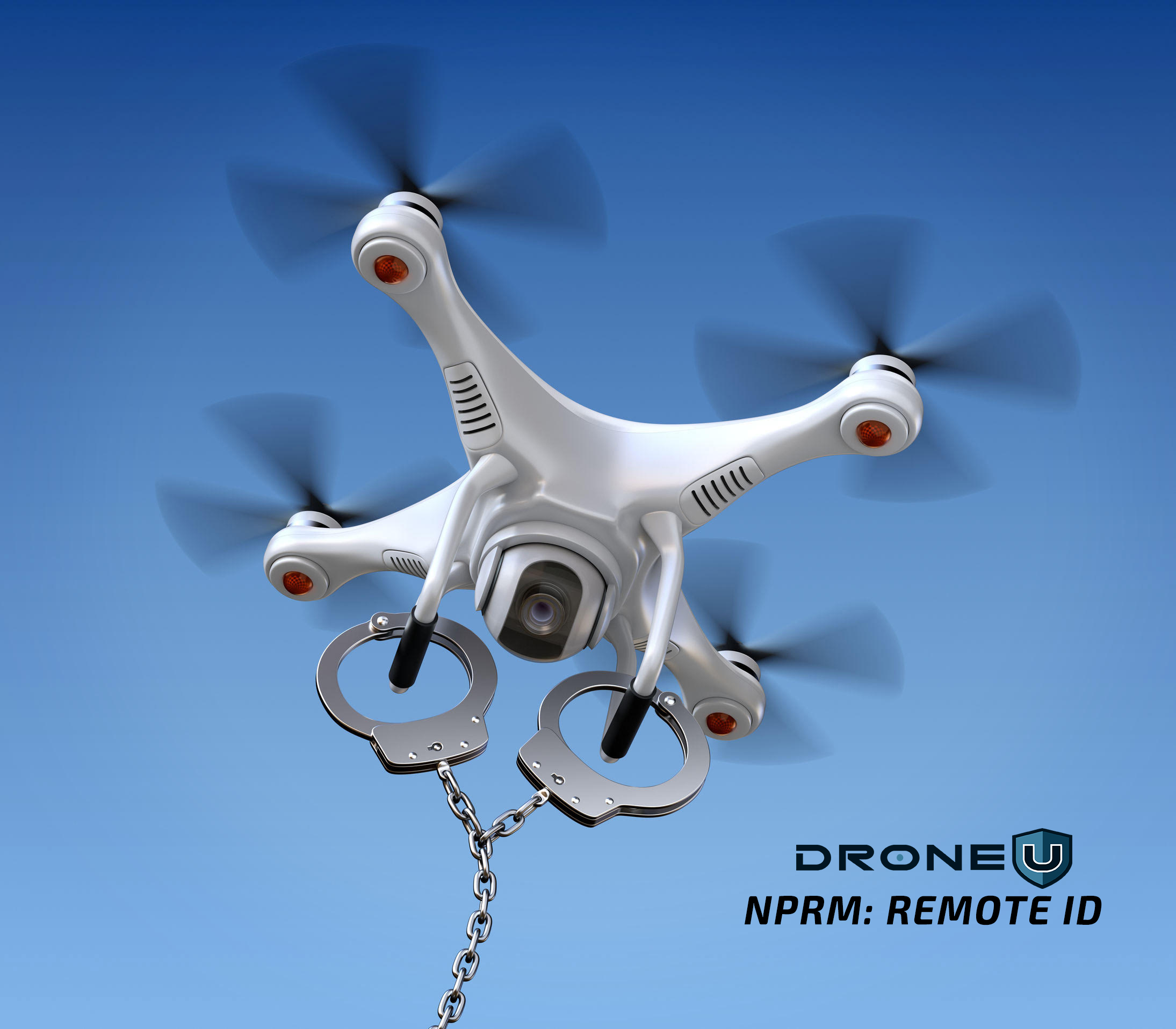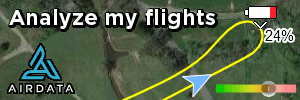Let's break your post down into manageable sections:
Congrats on your Part 107.
Don't run out and spend a fortune on setting up a small business until you can prove you can make a profit at it. I see so many "UAS Start Ups" that vanish in under a year because they are started out with lots of loans/Debt right off the bat. These companies buy the best gear, new car/truck, wrap/brand/logo everything including the house cat, and get out the gate looking like a million dollars. Then when it's time to start paying the bills they don't have enough INCOME to surpass their expenses and the road is short and painful. Go Slow and Pay As You Go!!
Here is my "Take" on what's happening and it's a multilayered approach:
You mention "maybe agriculture" and the first thing I thought, "Does he realize how important BVLOS could be for someone doing hundreds of acres of Ag inspection work? When Time = $$ you're going to want to cover as much area from one location as is possible and not have to relocate for every flight to maintain VLOS." That's a BIG one for the § 107.31 requests going into the FAA.
The current rules & regs are not sufficient because so many people are going above and beyond the current regs on a daily basis. So many times we hear, "If they aren't going to enforce the rules then why would we try to follow them?" And there is some merit to that thought process simply because human nature is to push rules as far as we can until we get busted. No enforcement = No getting busted.
What you're suggesting is a multi-tiered Part 107 system. While I think it has some value I don't see that option being viable for a long time. Part 107 is still so young and new it's not going to get a major face-lift until it's much older.... if THEN.
One good thing to note is that, at least some FAA offices are greatly increasing their UAS manpower. I don't know where the $$ is coming from but some offices are training new UAS people right now. I know one such office that I have worked with and talk with has expanded their UAS division 300% with more slated to start in the next few weeks. I'm hoping this helps for Field Enforcement going forward. I'd much rather see additional fines/charges etc for those breaking the current regs rather than additional regs placed on the rest of us who are following them.
The biggest flaw I see in your suggestion of "Maybe leave all of this to the large energy companies, Amazon, and anyone else who needs/wants BVLOS flights for the needs of their businesses." is if we are all operating in the same airspace how does the BVLOS aircraft know where your aircraft is to Avoid a Conflict? Remember they can only see the DATA provided to them remotely and if you're not transmitting location and Alt they don't know you're there and no way to avoid you. You might be looking down at your display and not have any idea they are in the area until it's too late. It's really an All or Nothing type of process.
Me personally, I don't need BVLOS except for some Emergency Services type work. Most of my flying is done within 500' of where I'm standing so I don't want this extra set of hurdles and burdens. None-the-less if you're going to play in the NAS you've got to be playing from the same rule book as everyone else or you become a liability and danger to everyone else.
In Emergency Services operations we are operating in a controlled environment where no other aircraft are allowed to "legally" be. I'm sure all of this is going to screw up our Emergency Services operations as well.
Ok, im working my way through this document and reading all of your posts. I am very new to this industry as I just got my 107 in Oct of this year and dont have a whole bunch of hours logged. But as I read all of this I am very worried about my future direction in this ever growing Drone industry. Does it seem that they are trying to squeeze out all the little guys and hobbyists just to leave all of the flying to big biz?
Congrats on your Part 107.
Don't run out and spend a fortune on setting up a small business until you can prove you can make a profit at it. I see so many "UAS Start Ups" that vanish in under a year because they are started out with lots of loans/Debt right off the bat. These companies buy the best gear, new car/truck, wrap/brand/logo everything including the house cat, and get out the gate looking like a million dollars. Then when it's time to start paying the bills they don't have enough INCOME to surpass their expenses and the road is short and painful. Go Slow and Pay As You Go!!
Here is my "Take" on what's happening and it's a multilayered approach:
- a) Yes they are indeed making way for the Big Guys to be able to operate in our environment but in such a way to hopefully make it safer for everyone involved.
- b) As an industry we have done a horrible job in "Policing Ourselves" and really left the door wide open for Govt to step in and handle it for us. Not good but what option do they have? We see so many operators (hobby and rogue commercial) flying crazy distances (and bragging about it), flying near/over people and cars, flying in areas not allowed (restricted airspace etc), and flying in such a manner to be a danger to manned aircraft. It's almost epidemic seeing how many different infractions happen each and every day just on the Pilots Forums. Imagine how much bigger the problem is because Pilots is only a small portion of the total # of operations going on each and every day. Some people are smart enough to not post it online for everyone to see but it's still happening and still being reported heavily.
- c) BVLOS is a huge BUZZ word right now. I know many people "hobbyist and small business operators alike" have been screaming how much they want... no NEED this to be an option. Unfortunately few stopped long enough to realize what kind of "system" will be required to allow BVLOS to be done safely. I see it as one of those instances where wise people say, "Be careful what you ask for... you might accidentally get it!" It's not as simple as submitting a request for § 107.31 and getting it granted. There are so many requests for § 107.31 that the FAA must try and get something into place to facilitate this being a possibility but it's not going to be easy, fun, or budget friendly I'm afraid.
.......but as a pilot who is looking to do some realty work, rooftop inspection, and other very low altitude work(maybe agriculture?) I dont see the need to have to transmit or need ADS-B. Perhaps the current rules and regs are sufficient for many small businesses and pilots who don't require BVLOS flights. Maybe leave all of this to the large energy companies, Amazon, and anyone else who needs/wants BVLOS flights for the needs of their businesses. Just my thoughts!
You mention "maybe agriculture" and the first thing I thought, "Does he realize how important BVLOS could be for someone doing hundreds of acres of Ag inspection work? When Time = $$ you're going to want to cover as much area from one location as is possible and not have to relocate for every flight to maintain VLOS." That's a BIG one for the § 107.31 requests going into the FAA.
The current rules & regs are not sufficient because so many people are going above and beyond the current regs on a daily basis. So many times we hear, "If they aren't going to enforce the rules then why would we try to follow them?" And there is some merit to that thought process simply because human nature is to push rules as far as we can until we get busted. No enforcement = No getting busted.
What you're suggesting is a multi-tiered Part 107 system. While I think it has some value I don't see that option being viable for a long time. Part 107 is still so young and new it's not going to get a major face-lift until it's much older.... if THEN.
One good thing to note is that, at least some FAA offices are greatly increasing their UAS manpower. I don't know where the $$ is coming from but some offices are training new UAS people right now. I know one such office that I have worked with and talk with has expanded their UAS division 300% with more slated to start in the next few weeks. I'm hoping this helps for Field Enforcement going forward. I'd much rather see additional fines/charges etc for those breaking the current regs rather than additional regs placed on the rest of us who are following them.
The biggest flaw I see in your suggestion of "Maybe leave all of this to the large energy companies, Amazon, and anyone else who needs/wants BVLOS flights for the needs of their businesses." is if we are all operating in the same airspace how does the BVLOS aircraft know where your aircraft is to Avoid a Conflict? Remember they can only see the DATA provided to them remotely and if you're not transmitting location and Alt they don't know you're there and no way to avoid you. You might be looking down at your display and not have any idea they are in the area until it's too late. It's really an All or Nothing type of process.
Me personally, I don't need BVLOS except for some Emergency Services type work. Most of my flying is done within 500' of where I'm standing so I don't want this extra set of hurdles and burdens. None-the-less if you're going to play in the NAS you've got to be playing from the same rule book as everyone else or you become a liability and danger to everyone else.
In Emergency Services operations we are operating in a controlled environment where no other aircraft are allowed to "legally" be. I'm sure all of this is going to screw up our Emergency Services operations as well.




